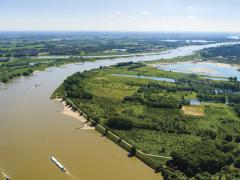Statement of the PPR Panel on a framework for conducting the environmental exposure and risk assessment for transition metals when used as active substances in plant protection products (PPP)
The European Food Safety Authority reviewed the current environmental risk assessment of iron and copper used as active substances in plant protection products. It is recommended to consider the accumulation of metals in environmental compartments (including soil) in revised risk assesment procedures
The European Commission asked the European Food Safety Authority (EFSA) to prepare a statement on a framework for the environmental risk assessment (ERA) of transition metals (e.g. iron and copper) used as active substances in plant protection products (PPPs). Non‐degradability, essentiality and specific conditions affecting fate and behaviour as well as their toxicity are distinctive characteristics possibly not covered in current guidance for PPPs.
The proposed risk assessment framework must take accumulation into account
The proposed risk assessment framework starts with a preliminary phase, in which monitoring data on transition metals in relevant environmental compartments are provided. They deliver the metal natural background and anthropogenic residue levels to be considered in the exposure calculations. A first assessment step is then performed assuming fully bioavailable residues. Should the first step fail, refined ERA can, in principle, consider bioavailability issues; however, non‐equilibrium conditions need to be taken into account. Simple models that are fit for purpose should be employed in order to avoid unnecessary complexity. Exposure models and scenarios would need to be adapted to address environmental processes and parameters relevant to the fate and behaviour of transition metals in water, sediment and soils (e.g. speciation). All developments should follow current EFSA guidance documents. If refined approaches have been used in the risk assessment of PPPs containing metals, post‐registration monitoring and controlled long‐term studies should be conducted and assessed. Utilisation of the same transition metal in other PPPs or for other uses will lead to accumulation in environmental compartments acting as sinks. In general, it has to be considered that the prospective risk assessment of metal‐containing PPPs can only cover a defined period as there are limitations in the long‐term hazard assessment due to issues of non‐degradability. It is therefore recommended to consider these aspects in any risk management decisions and to align the ERA with the goals of other overarching legislative frameworks.

Authors
Specifications
- Publication title
- Statement of the PPR Panel on a framework for conducting the environmental exposure and risk assessment for transition metals when used as active substances in plant protection products (PPP)
- Publication date
- 19 March 2021
- Publication type
- Article
- Page count
- 88
- Publication language
- English
- Magazine
- EFSA Journal
- ISSN
- 1831-4732
- Issue
- 2021; (19)3
- Product number
- 4635




